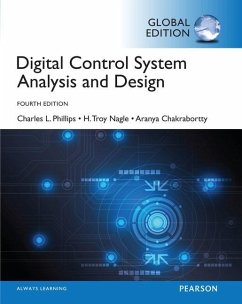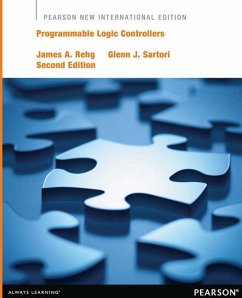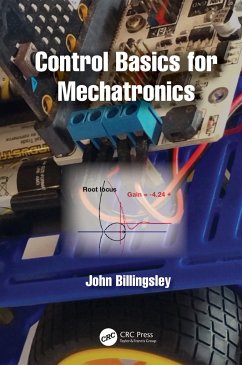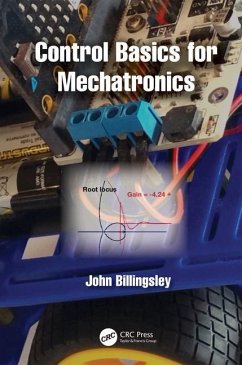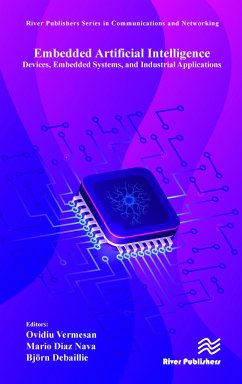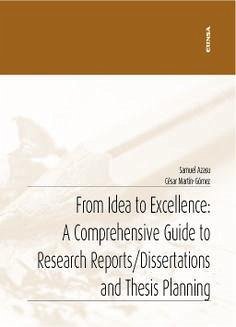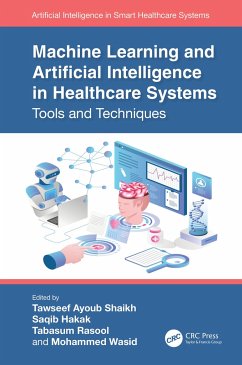
Quality Management for Organizational Excellence: Introduction to Total Quality
Pearson New International Edition

PAYBACK Punkte
63 °P sammeln!
For all courses in quality management, quality engineering, quality technology, and continuous process improvement, in universities, colleges, community colleges, and corporate environments.
This practical, student-focused text shows how to focus all of an organization’s resources on continuous and simultaneous improvement of quality and productivity – thereby continually improving both performance and competitiveness. It coherently addresses all elements of quality management, including Lean, Six Sigma, Lean Six Sigma, and many topics that competitive books overlook (e.g., peak performance, partnering, manufacturing networks, culture, and crucial “people” aspects of quality). Direct and straightforward, it links “big picture” theories and principles to detailed real-world strategies and techniques. Throughout, critical thinking activities, discussion assignments, and research links promote deeper thinking and further exploration. This edition adds all-new cases, plus new information on topics ranging from supervision to certification, QFD and SPC to benchmarking and JIT.
Features + Benefits
For all courses in quality management, quality engineering, quality technology, and continuous process improvement, in universities, colleges, community colleges, and corporate environments.
This practical, student-focused text shows how to focus all of an organization’s resources on continuous and simultaneous improvement of quality and productivity – thereby continually improving both performance and competitiveness. It coherently addresses all elements of quality management, including Lean, Six Sigma, Lean Six Sigma, and many topics that competitive books overlook (e.g., peak performance, partnering, manufacturing networks, culture, and crucial “people” aspects of quality). Direct and straightforward, it links “big picture” theories and principles to detailed real-world strategies and techniques. Throughout, critical thinking activities, discussion assignments, and research links promote deeper thinking and further exploration. This edition adds all-new cases, plus new information on topics ranging from supervision to certification, QFD and SPC to benchmarking and JIT.
Hallmark Features
Provides a focused, coherent resource for all the quality management knowledge students need, so they needn’t search for multiple sources or purchase multiple texts. Brings together in-depth coverage all elements of quality management, including just-in-time manufacturing, scientific measurement, continual improvement, teamwork, and much more.
Promotes effective learning, more critical thinking, and deeper exploration. Organized for the classroom and today’s students, this text utilizes a wide array of proven pedagogical features, including “key terms” listings, factual review questions, critical thinking activities, discussion assignments, and endnotes presenting links to extensive additional research materials.
Guides students in managing the crucial “people” issues associated with quality. Presents realistic and detailed coverage of “people” issues ranging from culture and teamwork to supervision – issues that many quality books deemphasize.
Gives quality “beginners” practical knowledge and insight they can use to participate in virtually any quality initiative. Provides practical information for participating in programs ranging from “peak performance” to manufacturing networks, TQM to continual improvement.
Helps students link theory and concepts with real-world tools and techniques. Presents key concepts first, and then shows exactly how they are applied through modern quality management tools and techniques.
CHAPTER 1 Introduction to Control Systems 1
1.1 Introduction 2
1.2 Brief History of Automatic Control 5
1.3 Examples of Control Systems 10
1.4 Engineering Design 17
1.5 Control System Design 18
1.6 Mechatronic Systems 21
1.7 Green Engineering 25
1.8 The Future Evolution of Control Systems 27
1.9 Design Examples 28
1.10 Sequential Design Example: Disk Drive Read System 32
1.11 Summary 34
Skills Check 35
Exercises 37
Problems 39
Advanced Problems 44
Design Problems 46
Terms and Concepts 48
CHAPTER 2 Mathematical Models of Systems 49
2.1 Introduction 50
2.2 Differential Equations of Physical Systems 50
2.3 Linear Approximations of Physical Systems 55
2.4 The Laplace Transform 58
2.5 The Transfer Function of Linear Systems 65
2.6 Block Diagram Models 79
2.7 Signal-Flow Graph Models 84
2.8 Design Examples 90
2.9 The Simulation of Systems Using Control Design Software 113
2.10 Sequential Design Example: Disk Drive Read System 128
2.11 Summary 130
Skills Check 131
Exercises 135
Problems 141
Advanced Problems 153
Design Problems 155
Computer Problems 157
Terms and Concepts 159
CHAPTER 3 State Variable Models 161
3.1 Introduction 162
3.2 The State Variables of a Dynamic System 162
3.3 The State Differential Equation 166
3.4 Signal-Flow Graph and Block Diagram Models 171
3.5 Alternative Signal-Flow Graph and Block Diagram Models 182
3.6 The Transfer Function from the State Equation 187
3.7 The Time Response and the State Transition Matrix 189
3.8 Design Examples 193
3.9 Analysis of State Variable Models Using Control Design Software 206
3.10 Sequential Design Example: Disk Drive Read System 209
3.11 Summary 213
Skills Check 214
Exercises 217
Problems 220
Advanced Problems 227
Design Problems 230
Computer Problems 231
Terms and Concepts 232
CHAPTER 4 Feedback Control System Characteristics 234
4.1 Introduction 235
4.2 Error Signal Analysis 237
4.3 Sensitivity of Control Systems to Parameter Variations 239
4.4 Disturbance Signals in a Feedback Control System 242
4.5 Control of the Transient Response 247
4.6 Steady-State Error 250
4.7 The Cost of Feedback 253
4.8 Design Examples 254
4.9 Control System Characteristics Using Control Design Software 268
4.10 Sequential Design Example: Disk Drive Read System 273
4.11 Summary 277
Skills Check 279
Exercises 283
Problems 287
Advanced Problems 293
Design Problems 296
Computer Problems 300
Terms and Concepts 303
CHAPTER 5 The Performance of Feedback Control Systems 304
5.1 Introduction 305
5.2 Test Input Signals 305
5.3 Performance of Second-Order Systems 308
5.4 Effects of a Third Pole and a Zero on the Second-Order System
Response 314
5.5 The s-Plane Root Location and the Transient Response 320
5.6 The Steady-State Error of Feedback Control Systems 322
5.7 Performance Indices 330
5.8 The Simplification of Linear Systems 339
5.9 Design Examples 342
5.10 System Performance Using Control Design Software 356
5.11 Sequential Design Example: Disk Drive Read System 360
5.12 Summary 364
Skills Check 364
Exercises 368
Problems 371
Advanced Problems 377
Design Problems 379
Computer Problems 382
Terms and Concepts 384
CHAPTER 6 The Stability of Linear Feedback Systems 386
6.1 The Concept of Stability 387
6.2 The Routh—Hurwitz Stability Criterion 391
6.3 The Relative Stability of Feedback Control Systems 399
6.4 The Stability of State Variable Systems 401
6.5 Design Examples 404
6.6 System Stability Using Control Design Software 413
6.7 Sequential Design Example: Disk Drive Read System 421
6.8 Summary 424
Skills Check 425
Exercises 428
Problems 430
Advanced Problems 435
Design Problems 438
Computer Problems 440
Terms and Concepts 442
CHAPTER 7 The Root Locus Method 443
7.1 Introduction 444
7.2 The Root Locus Concept 444
7.3 The Root Locus Procedure 449
7.4 Parameter Design by the Root Locus Method 467
7.5 Sensitivity and the Root Locus 473
7.6 PID Controllers 480
7.7 Negative Gain Root Locus 492
7.8 Design Examples 496
7.9 The Root Locus Using Control Design Software 510
7.10 Sequential Design Example: Disk Drive Read System 516
7.11 Summary 518
Skills Check 522
Exercises 526
Problems 530
Advanced Problems 539
Design Problems 543
Computer Problems 549
Terms and Concepts 551
CHAPTER 8 Frequency Response Methods 553
8.1 Introduction 554
8.2 Frequency Response Plots 556
8.3 Frequency Response Measurements 577
8.4 Performance Specifications in the Frequency Domain 579
8.5 Log Magnitude and Phase Diagrams 582
8.6 Design Examples 583
8.7 Frequency Response Methods Using Control Design Software 596
8.8 Sequential Design Example: Disk Drive Read System 602
8.9 Summary 603
Skills Check 608
Exercises 613
Problems 616
Advanced Problems 626
Design Problems 628
Computer Problems 631
Terms and Concepts 633
CHAPTER 9 Stability in the Frequency Domain 634
9.1 Introduction 635
9.2 Mapping Contours in the s-Plane 636
9.3 The Nyquist Criterion 642
9.4 Relative Stability and the Nyquist Criterion 653
9.5 Time-Domain Performance Criteria in the Frequency Domain 661
9.6 System Bandwidth 668
9.7 The Stability of Control Systems with Time Delays 668
9.8 Design Examples 673
9.9 PID Controllers in the Frequency Domain 691
9.10 Stability in the Frequency Domain Using Control Design Software 692
9.11 Sequential Design Example: Disk Drive Read System 700
9.12 Summary 703
Skills Check 711
Exercises 715
Problems 721
Advanced Problems 731
Design Problems 735
Computer Problems 740
Terms and Concepts 742
CHAPTER 10 The Design of Feedback Control Systems 743
10.1 Introduction 744
10.2 Approaches to System Design 745
10.3 Cascade Compensation Networks 747
10.4 Phase-Lead Design Using the Bode Diagram 751
10.5 Phase-Lead Design Using the Root Locus 757
10.6 System Design Using Integration Networks 764
10.7 Phase-Lag Design Using the Root Locus 767
10.8 Phase-Lag Design Using the Bode Diagram 772
This practical, student-focused text shows how to focus all of an organization’s resources on continuous and simultaneous improvement of quality and productivity – thereby continually improving both performance and competitiveness. It coherently addresses all elements of quality management, including Lean, Six Sigma, Lean Six Sigma, and many topics that competitive books overlook (e.g., peak performance, partnering, manufacturing networks, culture, and crucial “people” aspects of quality). Direct and straightforward, it links “big picture” theories and principles to detailed real-world strategies and techniques. Throughout, critical thinking activities, discussion assignments, and research links promote deeper thinking and further exploration. This edition adds all-new cases, plus new information on topics ranging from supervision to certification, QFD and SPC to benchmarking and JIT.
Features + Benefits
For all courses in quality management, quality engineering, quality technology, and continuous process improvement, in universities, colleges, community colleges, and corporate environments.
This practical, student-focused text shows how to focus all of an organization’s resources on continuous and simultaneous improvement of quality and productivity – thereby continually improving both performance and competitiveness. It coherently addresses all elements of quality management, including Lean, Six Sigma, Lean Six Sigma, and many topics that competitive books overlook (e.g., peak performance, partnering, manufacturing networks, culture, and crucial “people” aspects of quality). Direct and straightforward, it links “big picture” theories and principles to detailed real-world strategies and techniques. Throughout, critical thinking activities, discussion assignments, and research links promote deeper thinking and further exploration. This edition adds all-new cases, plus new information on topics ranging from supervision to certification, QFD and SPC to benchmarking and JIT.
Hallmark Features
Provides a focused, coherent resource for all the quality management knowledge students need, so they needn’t search for multiple sources or purchase multiple texts. Brings together in-depth coverage all elements of quality management, including just-in-time manufacturing, scientific measurement, continual improvement, teamwork, and much more.
Promotes effective learning, more critical thinking, and deeper exploration. Organized for the classroom and today’s students, this text utilizes a wide array of proven pedagogical features, including “key terms” listings, factual review questions, critical thinking activities, discussion assignments, and endnotes presenting links to extensive additional research materials.
Guides students in managing the crucial “people” issues associated with quality. Presents realistic and detailed coverage of “people” issues ranging from culture and teamwork to supervision – issues that many quality books deemphasize.
Gives quality “beginners” practical knowledge and insight they can use to participate in virtually any quality initiative. Provides practical information for participating in programs ranging from “peak performance” to manufacturing networks, TQM to continual improvement.
Helps students link theory and concepts with real-world tools and techniques. Presents key concepts first, and then shows exactly how they are applied through modern quality management tools and techniques.
CHAPTER 1 Introduction to Control Systems 1
1.1 Introduction 2
1.2 Brief History of Automatic Control 5
1.3 Examples of Control Systems 10
1.4 Engineering Design 17
1.5 Control System Design 18
1.6 Mechatronic Systems 21
1.7 Green Engineering 25
1.8 The Future Evolution of Control Systems 27
1.9 Design Examples 28
1.10 Sequential Design Example: Disk Drive Read System 32
1.11 Summary 34
Skills Check 35
Exercises 37
Problems 39
Advanced Problems 44
Design Problems 46
Terms and Concepts 48
CHAPTER 2 Mathematical Models of Systems 49
2.1 Introduction 50
2.2 Differential Equations of Physical Systems 50
2.3 Linear Approximations of Physical Systems 55
2.4 The Laplace Transform 58
2.5 The Transfer Function of Linear Systems 65
2.6 Block Diagram Models 79
2.7 Signal-Flow Graph Models 84
2.8 Design Examples 90
2.9 The Simulation of Systems Using Control Design Software 113
2.10 Sequential Design Example: Disk Drive Read System 128
2.11 Summary 130
Skills Check 131
Exercises 135
Problems 141
Advanced Problems 153
Design Problems 155
Computer Problems 157
Terms and Concepts 159
CHAPTER 3 State Variable Models 161
3.1 Introduction 162
3.2 The State Variables of a Dynamic System 162
3.3 The State Differential Equation 166
3.4 Signal-Flow Graph and Block Diagram Models 171
3.5 Alternative Signal-Flow Graph and Block Diagram Models 182
3.6 The Transfer Function from the State Equation 187
3.7 The Time Response and the State Transition Matrix 189
3.8 Design Examples 193
3.9 Analysis of State Variable Models Using Control Design Software 206
3.10 Sequential Design Example: Disk Drive Read System 209
3.11 Summary 213
Skills Check 214
Exercises 217
Problems 220
Advanced Problems 227
Design Problems 230
Computer Problems 231
Terms and Concepts 232
CHAPTER 4 Feedback Control System Characteristics 234
4.1 Introduction 235
4.2 Error Signal Analysis 237
4.3 Sensitivity of Control Systems to Parameter Variations 239
4.4 Disturbance Signals in a Feedback Control System 242
4.5 Control of the Transient Response 247
4.6 Steady-State Error 250
4.7 The Cost of Feedback 253
4.8 Design Examples 254
4.9 Control System Characteristics Using Control Design Software 268
4.10 Sequential Design Example: Disk Drive Read System 273
4.11 Summary 277
Skills Check 279
Exercises 283
Problems 287
Advanced Problems 293
Design Problems 296
Computer Problems 300
Terms and Concepts 303
CHAPTER 5 The Performance of Feedback Control Systems 304
5.1 Introduction 305
5.2 Test Input Signals 305
5.3 Performance of Second-Order Systems 308
5.4 Effects of a Third Pole and a Zero on the Second-Order System
Response 314
5.5 The s-Plane Root Location and the Transient Response 320
5.6 The Steady-State Error of Feedback Control Systems 322
5.7 Performance Indices 330
5.8 The Simplification of Linear Systems 339
5.9 Design Examples 342
5.10 System Performance Using Control Design Software 356
5.11 Sequential Design Example: Disk Drive Read System 360
5.12 Summary 364
Skills Check 364
Exercises 368
Problems 371
Advanced Problems 377
Design Problems 379
Computer Problems 382
Terms and Concepts 384
CHAPTER 6 The Stability of Linear Feedback Systems 386
6.1 The Concept of Stability 387
6.2 The Routh—Hurwitz Stability Criterion 391
6.3 The Relative Stability of Feedback Control Systems 399
6.4 The Stability of State Variable Systems 401
6.5 Design Examples 404
6.6 System Stability Using Control Design Software 413
6.7 Sequential Design Example: Disk Drive Read System 421
6.8 Summary 424
Skills Check 425
Exercises 428
Problems 430
Advanced Problems 435
Design Problems 438
Computer Problems 440
Terms and Concepts 442
CHAPTER 7 The Root Locus Method 443
7.1 Introduction 444
7.2 The Root Locus Concept 444
7.3 The Root Locus Procedure 449
7.4 Parameter Design by the Root Locus Method 467
7.5 Sensitivity and the Root Locus 473
7.6 PID Controllers 480
7.7 Negative Gain Root Locus 492
7.8 Design Examples 496
7.9 The Root Locus Using Control Design Software 510
7.10 Sequential Design Example: Disk Drive Read System 516
7.11 Summary 518
Skills Check 522
Exercises 526
Problems 530
Advanced Problems 539
Design Problems 543
Computer Problems 549
Terms and Concepts 551
CHAPTER 8 Frequency Response Methods 553
8.1 Introduction 554
8.2 Frequency Response Plots 556
8.3 Frequency Response Measurements 577
8.4 Performance Specifications in the Frequency Domain 579
8.5 Log Magnitude and Phase Diagrams 582
8.6 Design Examples 583
8.7 Frequency Response Methods Using Control Design Software 596
8.8 Sequential Design Example: Disk Drive Read System 602
8.9 Summary 603
Skills Check 608
Exercises 613
Problems 616
Advanced Problems 626
Design Problems 628
Computer Problems 631
Terms and Concepts 633
CHAPTER 9 Stability in the Frequency Domain 634
9.1 Introduction 635
9.2 Mapping Contours in the s-Plane 636
9.3 The Nyquist Criterion 642
9.4 Relative Stability and the Nyquist Criterion 653
9.5 Time-Domain Performance Criteria in the Frequency Domain 661
9.6 System Bandwidth 668
9.7 The Stability of Control Systems with Time Delays 668
9.8 Design Examples 673
9.9 PID Controllers in the Frequency Domain 691
9.10 Stability in the Frequency Domain Using Control Design Software 692
9.11 Sequential Design Example: Disk Drive Read System 700
9.12 Summary 703
Skills Check 711
Exercises 715
Problems 721
Advanced Problems 731
Design Problems 735
Computer Problems 740
Terms and Concepts 742
CHAPTER 10 The Design of Feedback Control Systems 743
10.1 Introduction 744
10.2 Approaches to System Design 745
10.3 Cascade Compensation Networks 747
10.4 Phase-Lead Design Using the Bode Diagram 751
10.5 Phase-Lead Design Using the Root Locus 757
10.6 System Design Using Integration Networks 764
10.7 Phase-Lag Design Using the Root Locus 767
10.8 Phase-Lag Design Using the Bode Diagram 772
For all courses in quality management, quality engineering, quality technology, and continuous process improvement, in universities, colleges, community colleges, and corporate environments. This practical, student-focused text shows how to focus all of an organization's resources on continuous and simultaneous improvement of quality and productivity ? thereby continually improving both performance and competitiveness. It coherently addresses all elements of quality management, including Lean, Six Sigma, Lean Six Sigma, and many topics that competitive books overlook (e.g., peak performance, partnering, manufacturing networks, culture, and crucial ?people? aspects of quality). Direct and straightforward, it links ?big picture? theories and principles to detailed real-world strategies and techniques. Throughout, critical thinking activities, discussion assignments, and research links promote deeper thinking and further exploration. This edition adds all-new cases, plus new information on topics ranging from supervision to certification, QFD and SPC to benchmarking and JIT.
Dieser Artikel kann nur an eine deutsche Lieferadresse ausgeliefert werden.




